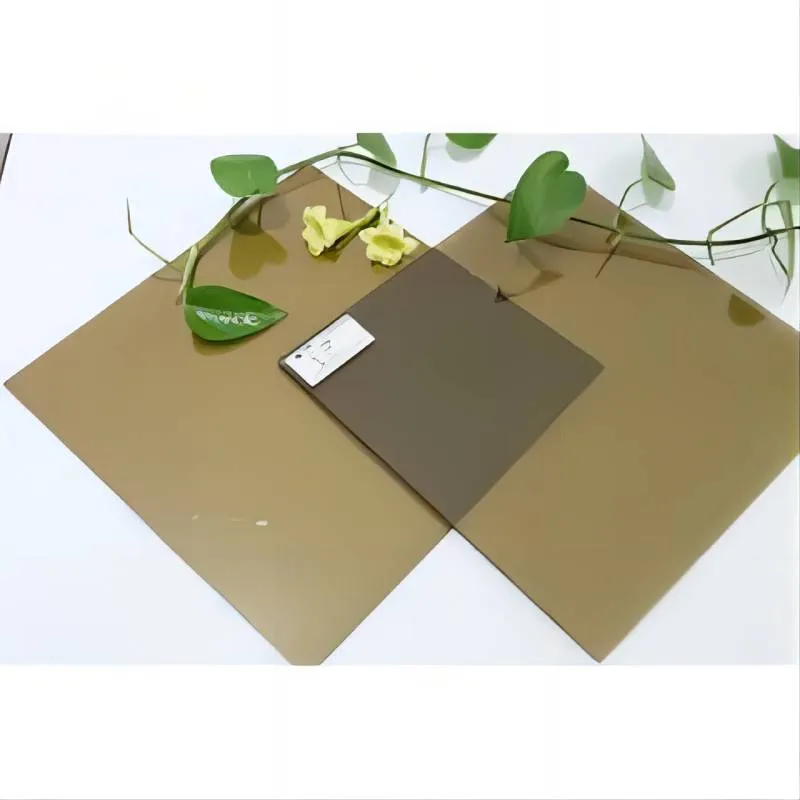Understanding the Float Glass Process A Comprehensive Overview
The float glass process is one of the most significant technological advancements in the glass manufacturing industry. Developed in the 1950s by Sir Alastair Pilkington and his team, this method revolutionized the production of flat glass used in windows, mirrors, and various architectural applications. Unlike traditional glass manufacturing techniques, the float glass process offers superior quality, consistency, and thickness control, making it a preferred method across the globe.
The Principle of the Float Glass Process
At the core of the float glass process is the principle of floating molten glass on molten tin. This unique method involves introducing molten glass into a bath of liquid tin, where the glass spreads out to form a flat, even sheet. The density of the molten tin ensures that the glass remains on the surface, preventing any distortion and allowing for a high degree of flatness. This specifically engineered environment eliminates the need for traditional grinding and polishing techniques, resulting in a product that boasts unparalleled optical clarity.
Key Stages of the Float Glass Process
The float glass process consists of several critical stages, each of which is vital to producing high-quality glass
.
1. Batch Preparation The process begins with the preparation of the raw materials, which typically include silica sand, soda ash, and limestone. These ingredients are carefully measured and mixed to form a glass batch. Additives may be incorporated to impart specific properties to the glass, such as color or UV resistance.
2. Melting The glass batch is then fed into a furnace where it is heated to temperatures exceeding 1,600 degrees Celsius (approximately 2,912 degrees Fahrenheit). This high-temperature environment facilitates the melting of the raw materials into molten glass. Energy efficiency is a crucial consideration at this stage, and modern furnaces are designed to minimize energy consumption while maximizing output.
3. Floating Once the glass is molten, it is directed into a float bath filled with liquid tin. The glass flows onto the tin surface, where it spreads out, forming a continuous ribbon of uniform thickness. This stage is crucial for achieving the flatness and surface quality that float glass is renowned for.
float glass process
4. Annealing After the glass has floated for a predetermined period, it moves to the annealing lehr, a temperature-controlled furnace. This stage allows the glass to cool gradually, reducing internal stresses that could lead to breakage. The control of the annealing process is essential for ensuring the structural integrity and durability of the final product.
5. Cutting and Finishing Once the glass is adequately cooled, it is cut into sheets of desired sizes. Additional processes such as edge finishing, coating, and lamination may be applied depending on the intended application. These finishing touches enhance the functionality and aesthetic appeal of the glass.
Advantages of the Float Glass Process
The float glass process has several advantages that make it the preferred manufacturing method for flat glass
- High Optical Quality The absence of surface imperfections and uniform thickness allows for high transparency and minimal distortion, making it ideal for applications such as automotive glazing and architectural facades.
- Cost-Effectiveness While the initial setup costs for float glass production may be high, the efficiency of the process and the resulting volume of high-quality glass provide a favorable cost-benefit ratio in the long run.
- Environmental Considerations Modern float glass production facilities are increasingly adopting eco-friendly technologies and systems to reduce waste and energy use, aligning with global sustainability goals.
Conclusion
The float glass process is an exemplary model of how innovation can lead to significant improvements in manufacturing techniques. Its ability to produce high-quality flat glass with greater efficiency and lower environmental impact has cemented its place as the dominant method in the industry. As technology continues to advance, the float glass process will likely evolve further, introducing new possibilities for applications in various fields, from construction to transportation and beyond. Understanding this process is essential for anyone involved in the glass manufacturing industry or who wishes to appreciate the intricate science behind modern glass production.
 Afrikaans
Afrikaans  Albanian
Albanian  Amharic
Amharic  Arabic
Arabic  Armenian
Armenian  Azerbaijani
Azerbaijani  Basque
Basque  Belarusian
Belarusian  Bengali
Bengali  Bosnian
Bosnian  Bulgarian
Bulgarian  Catalan
Catalan  Cebuano
Cebuano  Corsican
Corsican  Croatian
Croatian  Czech
Czech  Danish
Danish  Dutch
Dutch  English
English  Esperanto
Esperanto  Estonian
Estonian  Finnish
Finnish  French
French  Frisian
Frisian  Galician
Galician  Georgian
Georgian  German
German  Greek
Greek  Gujarati
Gujarati  Haitian Creole
Haitian Creole  hausa
hausa  hawaiian
hawaiian  Hebrew
Hebrew  Hindi
Hindi  Miao
Miao  Hungarian
Hungarian  Icelandic
Icelandic  igbo
igbo  Indonesian
Indonesian  irish
irish  Italian
Italian  Japanese
Japanese  Javanese
Javanese  Kannada
Kannada  kazakh
kazakh  Khmer
Khmer  Rwandese
Rwandese  Korean
Korean  Kurdish
Kurdish  Kyrgyz
Kyrgyz  Lao
Lao  Latin
Latin  Latvian
Latvian  Lithuanian
Lithuanian  Luxembourgish
Luxembourgish  Macedonian
Macedonian  Malgashi
Malgashi  Malay
Malay  Malayalam
Malayalam  Maltese
Maltese  Maori
Maori  Marathi
Marathi  Mongolian
Mongolian  Myanmar
Myanmar  Nepali
Nepali  Norwegian
Norwegian  Norwegian
Norwegian  Occitan
Occitan  Pashto
Pashto  Persian
Persian  Polish
Polish  Portuguese
Portuguese  Punjabi
Punjabi  Romanian
Romanian  Russian
Russian  Samoan
Samoan  Scottish Gaelic
Scottish Gaelic  Serbian
Serbian  Sesotho
Sesotho  Shona
Shona  Sindhi
Sindhi  Sinhala
Sinhala  Slovak
Slovak  Slovenian
Slovenian  Somali
Somali  Spanish
Spanish  Sundanese
Sundanese  Swahili
Swahili  Swedish
Swedish  Tagalog
Tagalog  Tajik
Tajik  Tamil
Tamil  Tatar
Tatar  Telugu
Telugu  Thai
Thai  Turkish
Turkish  Turkmen
Turkmen  Ukrainian
Ukrainian  Urdu
Urdu  Uighur
Uighur  Uzbek
Uzbek  Vietnamese
Vietnamese  Welsh
Welsh  Bantu
Bantu  Yiddish
Yiddish  Yoruba
Yoruba  Zulu
Zulu 

